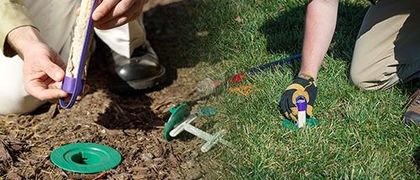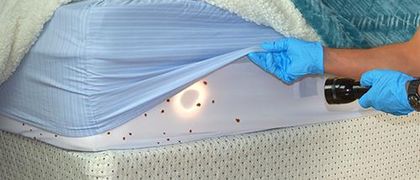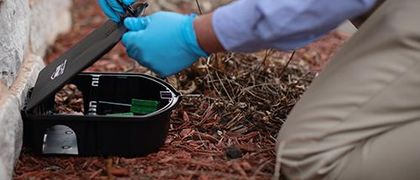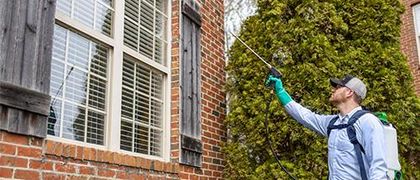How Did I Get Fleas In My House?
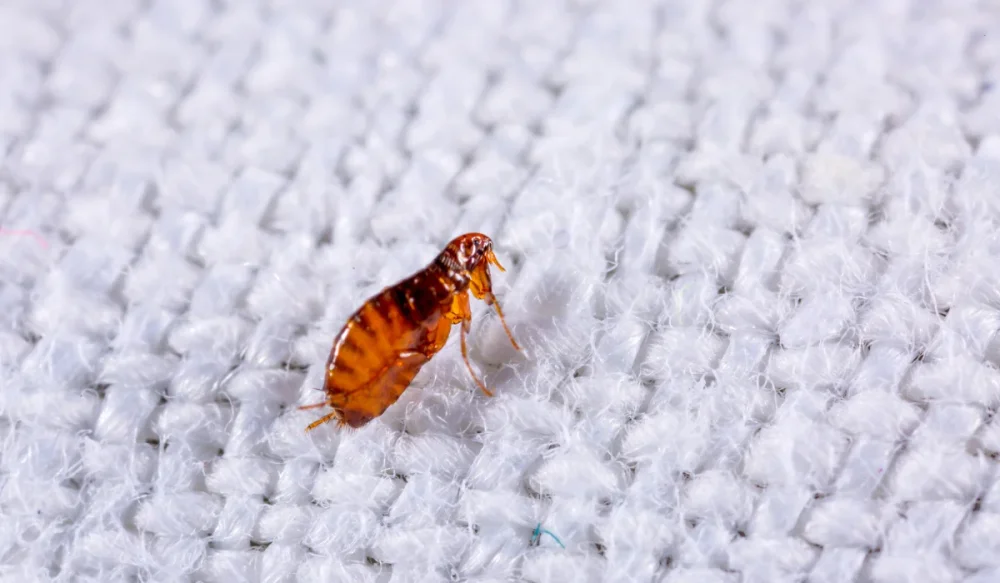
Seeing a flea dart across your carpet or, worse, finding flea bites on your ankles can leave you scratching your head and wondering: How did I get fleas in my house?
If you're dealing with a flea infestation, you're not alone. Here in the Midwest, fleas are a stubborn problem for many homeowners, especially in Des Moines, Kansas City, and Omaha. The good news is that understanding how fleas get inside is the first step toward getting rid of them.
In this article, we’ll explain exactly how fleas end up in your home, how their life cycle makes them hard to control, and what you can do to solve the problem.
Key Takeaways
- Fleas commonly enter homes by hitching rides on pets or wildlife.
- The flea life cycle (egg, larva, pupa, adult) makes infestations tough to eliminate.
- Treating pets, vacuuming, and professional pest control are key steps to get rid of fleas.
- Consistent flea prevention helps protect your home year-round.
Understand how fleas get into your house
Fleas are tiny and resourceful. Most often, they catch a ride on a host to get inside. In the Midwest, the most common culprits are pets (especially cats and dogs) and wild animals like raccoons, squirrels, and stray cats.
Pets bring them in
Adult fleas feed on the blood of animals. When your pet goes outside, even briefly, they can pick up adult fleas in the yard or from contact with infested animals. Once inside, a female flea can lay eggs in your pet's fur, pet bedding, or carpets. These flea eggs soon hatch into flea larvae, setting the stage for a full-blown infestation.
Wildlife and rodents
Fleas can also enter your home indirectly. Raccoons, squirrels, and other wild animals nesting near your home can drop flea eggs around your property. Mice and rats are another common source; their fur can carry fleas that eventually migrate indoors.
Infested items
In some cases, fleas hitch rides on secondhand furniture, rugs, or clothes. If you recently brought secondhand items into your home, inspect them carefully. Upholstery, couches, and pet bedding are common hiding spots.
Seasonal flea activity in the Midwest
Flea activity is influenced by the weather. In the Midwest, fleas are most active during warm, humid months, typically late spring through early fall. However, because homes provide a climate-controlled environment, fleas can remain active indoors year-round. This is why you might notice an infestation even during colder months.
How fleas spread inside your home
Once a few adult fleas get inside, they quickly establish a presence. Flea eggs fall from your pet into your car, carpets, cracks in hardwood floors, upholstery seams, and pet bedding. As larvae hatch and mature, they spread further into your home, creating new hot spots for infestation.
Understand the flea life cycle

One reason flea problems can feel relentless is their life cycle. Fleas go through four life stages: flea eggs, flea larvae, pupae, and adult fleas.
- Flea eggs: A female flea can lay up to 50 eggs per day after a blood meal. Eggs often fall off the host onto carpets, cracks, and furniture. Eggs hatch in about 2 to 5 days.
- Flea larvae: These tiny, worm-like larvae feed on flea dirt (flea feces) and organic debris. The larval stage lasts 5 to 15 days.
- Pupae: After spinning a cocoon, the flea enters the pupae stage. Pupae can remain dormant for weeks or even months, protected from treatments. Fleas in this stage can survive without a host until they detect heat, movement, or carbon dioxide, triggers that signal a host is nearby.
- Adult fleas: Triggered by carbon dioxide and vibrations, adults emerge to seek a blood meal. Once they find a host, they begin feeding and breeding immediately.
Breaking the flea life cycle is essential for effective flea control. Treating adult fleas alone won't eliminate eggs, larvae, or pupae hiding in your home.
Vacuum every crevice thoroughly
Vacuuming is one of the most important steps in flea control. It removes adults, flea dirt, eggs, and larvae from your home. Here's a step-by-step guide to vacuuming effectively:
- Vacuum all carpets, rugs, and floors, including hardwood and tile.
- Move furniture and vacuum underneath.
- Pay special attention to baseboards, corners, and cracks.
- Vacuum upholstered furniture, focusing on seams and crevices.
- Use a vacuum with a HEPA filter if possible, as this helps capture allergens and flea dirt.
- Always empty the vacuum bag or canister outside immediately to prevent reinfestation.
In addition, wash pet bedding and blankets in hot water and dry on high heat. Repeat vacuuming daily during active treatment to remove newly hatched fleas.
Treat your pets consistently
Begin with your pets since they’re often the main source. Use vet-recommended flea treatments consistently. Options include:
- Flea medications: Oral medications like Comfortis or Capstar provide fast relief.
- Topical flea treatments: Products like Frontline or Advantage kill adult fleas and prevent new infestations.
- Flea collars: High-quality flea collars provide long-term protection.
- Flea shampoos: Useful for removing fleas on contact, though they don't offer lasting prevention.
A flea comb can help remove adult fleas and flea dirt from your pet’s fur. Be sure to comb carefully around the neck, belly, and tail areas where fleas tend to gather.
If your pet shows signs of an allergic reaction to flea bites (excessive itching, hair loss, skin inflammation), consult your veterinarian for additional treatment options.
How fleas affect your pets and your family
Fleas are more than a nuisance. They can impact the health of both pets and people:
- Flea bites: Cause itching and irritation. Pets may develop allergic dermatitis, leading to severe skin problems.
- Tapeworms: Pets can become infected with tapeworms after ingesting an infected flea.
- Anemia: Severe infestations can cause anemia, especially in young or small pets.
- Typhus: In rare cases, fleas can transmit typhus to humans.
- Allergic reactions: Flea dirt and shed skin can trigger allergic reactions in sensitive individuals.
Addressing a flea infestation promptly helps protect your family's well-being.
Use flea control products in your home
Consider using a pet-safe flea spray or diatomaceous earth (DE) for flea-prone areas. DE works by drying out the flea's exoskeleton. Apply it lightly to carpets, cracks, and crevices, let it sit for 24-48 hours, and vacuum thoroughly.
Flea foggers are another option, but be cautious. They may not penetrate hidden areas where fleas lay eggs or pupate. Spot treatments with targeted sprays are often more effective.
You can also set up DIY flea traps: place a shallow dish of soapy water under a small light overnight. Adult fleas are drawn to the light and drown in the soapy water.
What to do if you still have fleas in your house
Sometimes, even after you’ve done everything right, fleas keep coming back. Here’s what to do next.
Check your home and yard
If your yard or garage is harboring flea eggs or flea larvae, reinfestation is likely. Treating only indoors is like fixing a leaky roof by patching one spot. Here’s how to help stop the cycle:
- Treat shady areas of your yard where fleas thrive.
- Remove leaf litter and yard debris.
- Discourage wildlife from nesting near your home.
- Treat outdoor pet resting spots with flea control products.
Indoors, check for fleas in less obvious spots like attics, crawlspaces, and wall voids. Fleas can sometimes hide in these areas and reemerge later. If this is still not enough, consider a flea exterminator.
Consider professional pest control services
If fleas keep returning despite your efforts, it might be time to call in the pros. A local pest control team will be familiar with seasonal flea issues in Des Moines, Omaha, or Kansas City and can offer a customized flea treatment.
At Miller Pest & Termite, our technicians understand the flea life cycle and use an integrated pest management approach to target fleas at every stage, inside your home, on your property, and with guidance for treating your pets.
If fleas are driving you (and your pets) crazy, we’re here to help.
Get Help Now!


